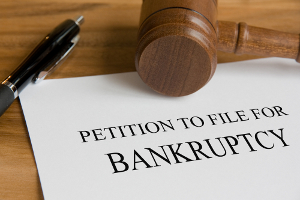 In most cases the Chapter 7 bankruptcy process takes four to five months. After filing the bankruptcy petition, a meeting is scheduled with a trustee. This meeting is called a 341 meeting or a meeting of creditors. The 341 meeting is schedule four to six weeks after the case is filed. On the day of the meeting the debtor meets the trustee with their attorney. The trustee confirms who they are, asks some questions on the record, and gives the debtor’s attorney an opportunity to ask questions as well. The entire meeting usually lasts between five and ten minutes.
In most cases the Chapter 7 bankruptcy process takes four to five months. After filing the bankruptcy petition, a meeting is scheduled with a trustee. This meeting is called a 341 meeting or a meeting of creditors. The 341 meeting is schedule four to six weeks after the case is filed. On the day of the meeting the debtor meets the trustee with their attorney. The trustee confirms who they are, asks some questions on the record, and gives the debtor’s attorney an opportunity to ask questions as well. The entire meeting usually lasts between five and ten minutes.
After the 341 meeting the debtor must wait sixty days in order to give his creditors an opportunity to review the documents filed in the case and determine whether or not to object to discharge of their claim. Objections to discharge are very rare. They usually involve credit cards which the debtor used shortly before filing bankruptcy. These types of objections are filed in a small fraction of the total cases filed. After the sixty days has passed, the trustee will request a discharge order from the bankruptcy judge. It can take a few weeks for the judge to sign the order, depending on the court’s procedures and schedule for this type of activity. Some judges hold orders and sign them in batches once or twice a month. Based upon this schedule it is four to five months from filing until discharge.
However, the bankruptcy case itself may be open much longer if there are funds available to the trustee to disburse to creditors. The bankruptcy case may not be closed for up to two years while the trustee liquidates nonexempt property, requests proof of claims from creditors, objects to unsatisfactory claims, and disburses the money to the creditors. This can be a very slow process, but this part of the bankruptcy doesn’t have to involve the debtor and will not delay their discharge.